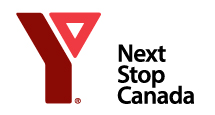Written by Jesse Li & Sevhan Acar-Hammudeh, Career Professionals with ACCES Employment
‘’Having provincial nomination from Ontario, we were confident that we could easily get jobs in Canada. At the time we had not heard of pre-arrival services or post-arrival services and did not know the importance of having a targeted Canadian-style resume for human-eye and computer screening. I remember the disappointment my spouse had not hearing back from the hundreds of job applications, and the stress it caused in our family. One day, visiting one of the Service Ontario Branches, we saw a sign for an Employment Agency and went inside to check if they could help. This is when we heard about the free pre-arrival and post-arrival employment services for newcomers and learned how to create targeted Canadian-style resumes. We wish we had known about the pre-arrival employment services before we arrived in Canada, as it would have saved our family so much time, money, and stress.’’
– Newcomer who landed in 2019
This is just one of the many stories we hear from newcomers on their job search journey in Canada. Working in the Canadian Employment Connections (CEC) pre-arrival program at ACCES Employment, we serve thousands of newcomers who are preparing to launch their careers in Canada. Through live webinars, e-learning modules, networking and hiring events and 1:1 coaching, we help newcomers understand the Canadian labour market, Canadian workplace culture, and business communication. All of these services are supported through extensive work developing job search tools and strategies through personalized employment supports. A great resume is one of the most important ways that job seekers can make good impressions in their job search, and we spend a great deal of time supporting our clients in creating ATS-friendly, Canadian-style targeted resumes.

You have probably heard of chronological, functional, and combined resume types, and might wonder whether a ‘targeted resume’ is another resume type. A targeted resume isn’t just another format- it is the product of consciously and strategically tailoring a resume to a specific job posting. This means that no targeted resume you create should look the same. You should be adjusting each one individually according to what a posting is telling you that the employer is looking for. Employers go into hiring processes with very specific needs, and simply applying with a general “master” resume will often result in either no response or automatic rejection emails from employers. Your targeted resume tells them that you understand what they’re looking for and that you’re willing to put in the time and effort to make your resume connect with their posting. For employers that use ATSs (Applicant Tracking Systems), a targeted resume is even more important. Without actively targeting your resume to a posting, it’s highly likely that it’ll be screened out by most ATS’s.
Applicant Tracking Systems (ATS) are software that help recruiters automate the screening, filtering, and ranking of applications. This might come as a surprise to those who think an HR representative is looking at every resume, but in organizations that use ATSs, 75% of the resumes are screened out automatically and are never seen by HR. Having an ATS-compliant resume is more likely to get you through this first part of the screening process. There are enough tips and tricks on how to create your resume to be ATS compliant that whole other blog posts could be written about them, but some tips include avoiding the use of information in the header/footer and not including icons, symbols, tables, or charts in our document. Making sure that you keep your resume ATS compliant will give you a big advantage in getting your resume into the human screening process.

If you do make it through to the human screening process, you don’t want your resume to be put to the side in six seconds because of a red flag. Some huge red flags on a resume are including personal information such as age, marital status, gender, religion, social insurance number (SIN), political affiliation or immigration status. None of these are required within a resume, and including them will send a signal to the screener that you are not aware of the cultural boundaries surrounding this information in Canada. Keep these out, make sure that it’s easy to read and that it tells a great story about how you use your skills and experience to contribute to your work, and you’ll be well on your way to getting a great targeted resume in front of someone.
Once you have established the basics of a Canadian-Style resume, the next step is to ensure that you tailor it according to the job description of a posting. To start, it is essential to understand the duties and skills the employer is asking for. Once you have highlighted them, you would want to have at least the following in your resume:
1. Matching keywords and skills to those found in the job description (e.g., Microsoft Office Suite, B2B, or action verbs like “negotiate”)
2. Specific accomplishments with clear qualitative or quantitative metrics that tie into the demands or duties of the role (e.g., Highlighting the success of your role in securing a sale to a major client by showcasing its impact on the total sales revenue in that specific quarter)
3. Including only the most relevant and matching job titles and experiences to the position (you do not have to include your entire work history)
Covering these three major areas will make a significant difference in how your resume is processed by the employer and will increase the likelihood of you reaching the interview stage. When it comes to applying for jobs, quality matters as much as quantity, so it is worth it to invest the time in targeting your resume for each role rather than just applying to 50+ positions with the same resume.

Changing your approach to resume writing and tailoring your resume to each posting can be both difficult and time-consuming. However, it is a necessary skill, and it helps everyone who is doing it to better understand their previous experience and how they can frame that experience for a range of employers. You’ve done so much! Framing your experience from different perspectives for different potential employers gives you a greater ability to talk about your work in new and interesting ways.
In this blog post, we have only just scratched the surface of how creating a targeted resume is the key to moving from the job application to the interview stage. If you are interested in learning more, please feel free to explore registering with a pre-arrival or post-arrival employment services provider to learn more about targeted resumes through live workshops/webinars while also receiving 1:1 job search support.







